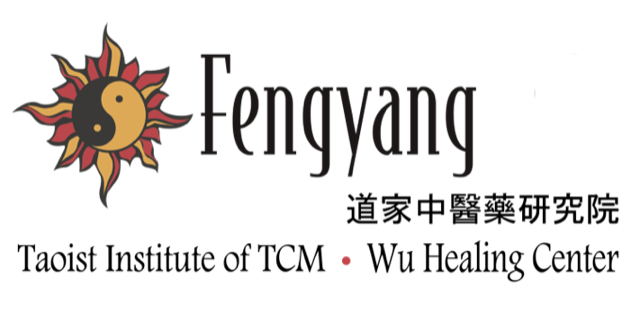Learn About Chinese Herbs -Shang Lu (Radix Phytolaccae)-
This product is a rare and commonly used medicine. "Shennong's Materia Medica" is listed as the lowest grade.
Alias: Hua Shang Lu.
Source: Phytolacca esculenta Van Hout, a perennial herb of the family Phytolacca esculenta. of dried roots.
Origin: mainly produced in Henan, Hubei, Anhui, Shaanxi and other places. In addition, Hebei, Gansu, Sichuan, Guizhou and other provinces are also produced. Mostly wild.
Trait identification: It has been processed into cross-cut or longitudinal slices in the place of origin, with different sizes and thicknesses. The skin is grayish-brown and shrunken. The cut-out surface is light yellowish-brown or off-whitish. The xylem of the cross-sectioned section is protruding, and the phloem is concave, forming uneven concentric rings, commonly known as "compass patterns" (the characteristics of this product). The xylem of the longitudinal section has many parallel longitudinal protrusions. The quality is hard and difficult to break. The smell is slight, the taste is bitter, slightly sweet and numb. It is better to have a large piece and obvious ring patterns on both sides of the color and white.
Main ingredients: Contains triterpenes, saponins, steroidal compounds, alkaloids and potassium nitrate.
Pharmacological effects: mainly diuretic effect. Due to the stimulation of the vascular motor nerve center, the blood flow in the renal area is increased and diuretic. In addition, the potassium salt it contains is also associated with diuretic effects. High doses can cause a decrease in urine output. In addition to diuresis, it also has a certain laxative effect, which stimulates the intestinal mucosa after taking it, which can cause watery diarrhea.
This product is highly toxic, and Shang Lu can cause central nervous system palsy, respiratory and motor disorders, slurred speech, agitation, muscle convulsions, and death due to cardiac palsy in severe cases. Mild poisoning may include fever, respiratory frequency, increased blood pressure, headache, dizziness, and severe diarrhea.
Preparation: vinegar, diced.
Taste: bitter cold. Poisonous.
Meridian: kidney meridian.
Function: water repellent, diuretic, swelling.
Indications: edema, poor urination.
Clinical application
Shang Lu to reduce swelling, the effect is inferior to Yuan Hua, Gan Sui and Dai Ji, mainly take its diuretic effect to treat renal edema, but due to the severe toxicity, the internal administration must be extremely cautious. It has been reported that if 1 coin of Shanglu and 60g of pork belly (i.e. semi-fat and lean pork) are used to decoction (only soup), the toxicity of Shanglu can be reduced. In the past, Shang Lu mixture (Shang Lu, Ze Xie, Du Zhong) was used to treat chronic nephritis edema when the patient is still strong, which has a certain curative effect, which can increase urine output and reduce edema, but this prescription has been used less in recent years. In short, due to the high toxicity of Shang Lu, clinical use should be taken with caution. Pregnant women should not use it.
Dosage: 1.5~4.5g (daily supply).
Prescription examples
· Shanglu mixture: Shang Lu, Ze Yuan, Du Zhong 3g each fried twice in water, and taken twice a day on an empty stomach.
[Attached] Guangdong Shanglu: The common name is Zhangliutou. Costus specious (Koen.) Smith's dried rhizomes. The taste is sour and pungent and is slightly cold, and there is a little poison. Contains saponins, acids and organic acids. Function: water dilution, swelling, poisoning, itching. It is used for the treatment of acute nephritis edema in children, and also for the treatment of urinary tract infection. Externally wash the affected area with decoction to treat urticaria. Dosage 3~15g into decoction. Appropriate amount for external use. For example, the herbal formula Ji Xing Shen Yan Fang (for acute nephrite): Zhang Liu Tou 15g, Ying Bu Bo 9g, Bai Mao Gen 15g, Yu Mi Xu 15g, Xian He Cao 9g, Che Qian Zi 9g, decoction in water. It has been reported that this formula has a good effect on acute nephritis in children.
Annotations
1. The Shanglu used in most areas of the country is the variety described in the text, which is consistent with the description of Materia Medica in the past dynasties. In addition, there are (1) Xinyang, Henan, Huanggang, and Xiaogan, Hubei, use the roots of the caryophyllaceae plant Silk Caryophyllus (that is, those who use it as Yin Chai Hu in some areas) for Shang Lu. (2) Guangdong uses the roots of the ginger family plant Bi Suo Jiang for commercial land. (3) The roots of a wild peony plant Chao Tian Guan produced in Sichuan are sold to other places as Shang Lu. These three commodities are very different from Shang Lu and do not have the characteristics "compass pattern" of Shang Lu. Easy to distinguish.
2. According to the "Handbook for the Identification of Traditional Chinese Medicine", Shandong, Zhejiang, and Jiangxi still produce and sell a kind of American continent brought Shang Lu, and no description of the characteristics of the commodity is made. However, according to the record of "Tianjin Chinese Herbal Medicine" under Shang Lu, "this kind of herb cannot be used as medicine, and accidental use causes people to enter liver coma".
Disclaimer: All above articles are for reference only. If patients are interested, please consult a professional practitioner Traditional Chinese Medicine for a consultation.




